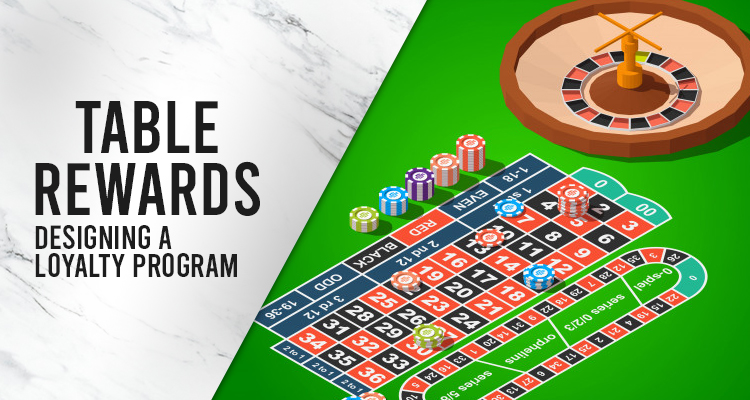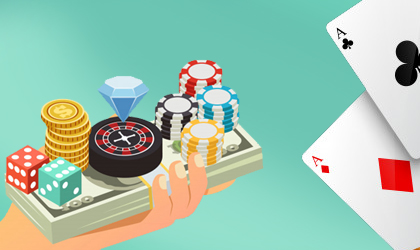Table Rewards: Designing a Loyalty Program - part I

Andrew MacDonald 05:12 Feb 21st, 2006 Games
Recently I had the opportunity to build a table game loyalty program called Table Rewards. The basic idea behind any casino loyalty program is to make players feel good about their purchase of an intangible product, namely, the gambling experience. Having lost $500 gambling, a player “needs” to feel that they have received something in return. In the old days, the benefit returned to a table player was based on the knowledge of the player by a host or a pit boss. This benefit or “comp” might have been a free meal, room, show or round of drinks.
 As the size and complexity of gaming operations grew, this early benefit system was replaced with computerized systems that enabled the capture of information such as the player's buy-in, average bet, time played and win or loss. Calculations could then be made on the earning potential from the player and a policy applied on how much of that could be returned in benefits. This meant that a player no longer had to rely on the particular relationship they had with a casino staff member but rather knew that a consistent approach was being applied across various shifts and from visit to visit. These same principles were applied to slot programs with great success. Slots though had a great advantage. Firstly, they captured all information electronically and so the play history was "pure". Secondly, this was updated in real time, as the player was playing, not at the end of a session. Thirdly, slots could communicate to the player, via electronic messages what they were earning as they played and what their total accumulated “point” balance was.
As the size and complexity of gaming operations grew, this early benefit system was replaced with computerized systems that enabled the capture of information such as the player's buy-in, average bet, time played and win or loss. Calculations could then be made on the earning potential from the player and a policy applied on how much of that could be returned in benefits. This meant that a player no longer had to rely on the particular relationship they had with a casino staff member but rather knew that a consistent approach was being applied across various shifts and from visit to visit. These same principles were applied to slot programs with great success. Slots though had a great advantage. Firstly, they captured all information electronically and so the play history was "pure". Secondly, this was updated in real time, as the player was playing, not at the end of a session. Thirdly, slots could communicate to the player, via electronic messages what they were earning as they played and what their total accumulated “point” balance was.
Unfortunately, for table games most of the above is still not true. We still rely on table game staff to guess a player's average bet, input the time played and estimate the player's win or loss. This isn't updated until the rating is entered into the computer system (in some casinos the next day) and this value is hardly ever communicated to the player. The challenge therefore for us with Table Rewards was to create a benefit system for table games that was easy to understand, overcame the above problems and provided the players benefits that they actually wanted.
One of the first critical issues we identified was the lack of clarity in previous table reward systems. How many dealers anywhere in the world can actually tell a player what benefits they are earning and how they can use these within the property? The better communicators might tell customers the system is based on theoretical loss but then have difficulty explaining what you might expect to lose. So the first phase in designing our reward program for table games was to establish how to define tables into categories. And since players understand the game type and minimum bet for the game they play, we broke our table games into four levels:
Level 1. $1 Roulette, $5 Blackjack, $2 Big 6 Wheel, $2 SicBo
Level 2. $2 Roulette, $15 Blackjack, $5 Big 6 Wheel, $5 SicBo, $5 Baccarat, $5 Caribbean Stud, $5 Craps
Level 3. $5 Roulette, $25 Blackjack, $25 Baccarat, $25 Caribbean Stud, $25 Pai Gow
Level 4. $10 Roulette, $50 Blackjack, $50 Baccarat, $50 Pai Gow.
The other readily definable quantity understood by guests is time. The longer a player plays, the more they should earn in benefits. For the design of our Table Rewards, time was broken into ½ hour units. Then, of course, we needed to understand what an average player theoretically lost per ½ hour unit at each level. For level 1 players this was $5, level 2 - $10, level 3 - $25 and level 4 - $50.
 Next, we knew we needed a framework to determine at what rate you should reward players. Are all players equal and therefore should earn the same percentage in benefits or do you want to look after your more valuable players who played on level 3 or 4 tables for longer periods of time? Then we knew it was critical to have a reward program that was easy for our guests to understand. The simplest unit is cash. People might be used to points but they understand cash. But we also didn't want the cash benefits walking out the door, so we created "Casino Cash". Casino Cash is essentially internal currency that can be used in any outlet in the facility on the purchase of any product.
Next, we knew we needed a framework to determine at what rate you should reward players. Are all players equal and therefore should earn the same percentage in benefits or do you want to look after your more valuable players who played on level 3 or 4 tables for longer periods of time? Then we knew it was critical to have a reward program that was easy for our guests to understand. The simplest unit is cash. People might be used to points but they understand cash. But we also didn't want the cash benefits walking out the door, so we created "Casino Cash". Casino Cash is essentially internal currency that can be used in any outlet in the facility on the purchase of any product.
To make this even more powerful, the product we knew they liked and were purchasing most was gaming. So "Casino Cash" could be used to buy chips. Not cash chips though, as again the money might walk out the door. "Free Play" chips can be used on any game on any bet but can't be cashed out. They have to be played. When a Free Play chip wins it is paid in cash chips.
So our "Casino Cash" lets players choose exactly how, when and where they will spend their rewards.
How do they get their "Casino Cash"? Accumulated and stored electronically on the database in their player account, which can be accessed, at any retail outlet or casino cashier. All computer systems are interfaced to make it easy for the customer to access their rewards.
Also in the design phase we knew we wanted our players to play more during off peak times (for a locals casino, like ours, Monday to Thursday) and to play for longer than our "normal" 2 hour average. So incentives were incorporated with double "Casino Cash" earned in off peak periods and a "Random Cash" award for playing 3 hours.
Effectively, with Table Rewards we succeeded in creating a simple system having benefits skewed towards off peak periods and incentives provided for longer playing times.
An easy to communicate and understandable system with real rewards that players want. What more could you ask for? Table Rewards!
On This Page



